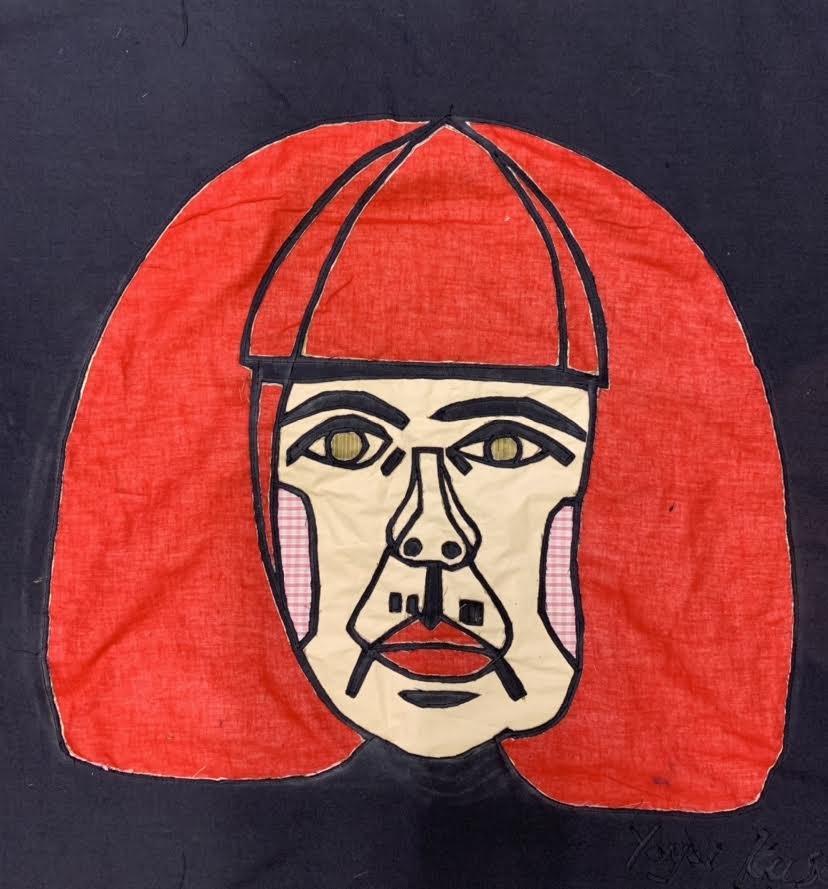Threads of inspiration: Fabric portraits of female artists - Yayoi Kusama
I wonder if you have heard of Yayoi Kusama? You may know the infinity mirror rooms at the Tate Modern that was on from 2021 to 2024 and was widely circulated on social media, gaining Yayoi the reputation of her work being the most instagram friendly. It was not that long ago that taking photographs of artists work in galleries was strictly prohibited. Kusama’s sharing policy has helped bring her work centre stage in the art world, becoming one of the most famous artists of our time.
For that reason and many others, I like to introduce my textiles students to her work. She has such a striking image, the red wigs and the vibrant clothes she wears and her art speaks to all generations.
I recently read about the story of when Yayoi went to the Venice Biennale in 1966, supported by her close friend and gallery owner Beatrice Webb. Yayoi filled the lawn outside the Italian pavilion with 1,500 mirrored balls, which she offered for sale at $20 apiece. The authorities said she was selling art like ‘hot dogs’.
Yayoi became more popular and began to make live ‘happenings’ in good locations. She painted naked people with black and white polka dots, then filmed them simulating tense orgasmic scenes, which caused a media backlash.
Yayoi suffered with mental health difficulties and at many times in her career she suffered set backs due to ill health. A sign for her that her neurosis was returning was when she could not stop painting. When this happened, Yayoi admitted herself into a Tokyo psychiatric institute, the Seiwa Hospital for the Mentally Ill, in 1977 and never checked out. She had attempted suicide before in the 1960s - once jumping out a window but surviving by landing on a bicycle - and she recognized the troubling signs. She now works in her studio across the street every day and returns to the institution at night.
In my own work and when I work with vulnerable groups, i find, like Yayoi that repetition of an action is very soothing. There is a lot of repetition in the pieces I make and this is very satisfying for my own mental health and for the individuals and groups i work with. Repeating the same action can have a meditative effect. When I made the Hope dress, I repeatedly ripped up and cut strips of fabric in preparation for the weaving of the dress. The process of the weaving was also a repetition, weaving the strips of fabric across the warp and the wheft of the loom has its own repetitive rhythum> .
Yayoi Kusama creates repeating patterns that are reassuring and extremely enjoyable to look at.
I have added Kusama to the pantheon of Female artists because I admire her resilience, the ability to keep making work even though at times it must be hard.

